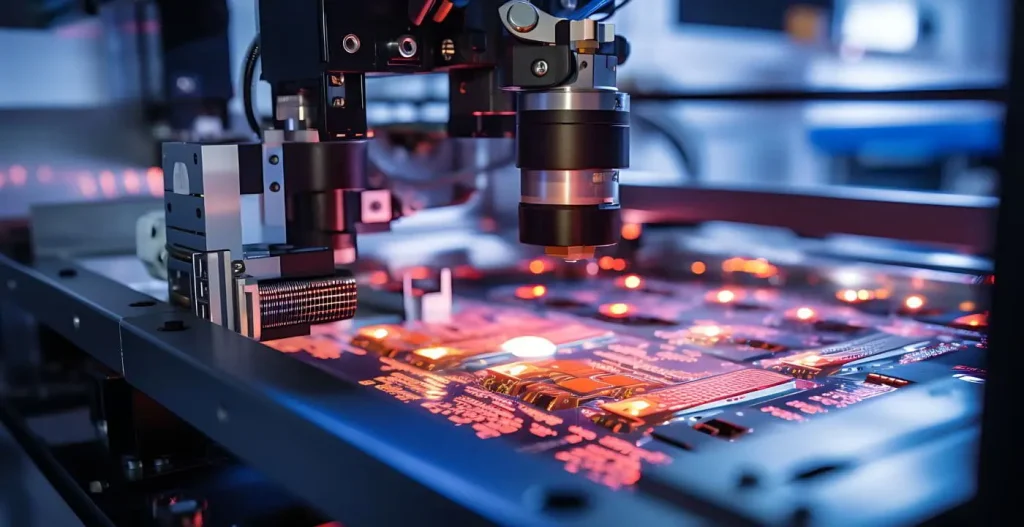Pneumatic actuators play a pivotal role in many automated systems, converting compressed air into mechanical motion. Whether you’re setting up a new pneumatic system or looking to enhance your understanding of existing equipment, knowing how pneumatic actuators work and how to select the right one is essential. This beginner’s guide will provide you with a comprehensive overview of pneumatic actuators, their types, applications, and key considerations for choosing the right actuator for your needs. At Pneumation.ca, we offer a wide range of pneumatic actuators and expert advice to help you make informed decisions for your automation projects.
What is a Pneumatic Actuator?
A pneumatic actuator is a device that converts compressed air into mechanical motion. It uses the energy from compressed air to produce linear or rotary movement, enabling the automation of various mechanical processes. Pneumatic actuators are commonly used in industrial applications, including manufacturing, packaging, and material handling, due to their reliability, speed, and cost-effectiveness.
Types of Pneumatic Actuators
- Linear Actuators
- Pneumatic Cylinders: Pneumatic cylinders are one of the most common types of linear actuators. They consist of a cylinder barrel, a piston, and end caps. Compressed air enters the cylinder, pushing the piston and creating linear motion. Pneumatic cylinders come in various designs, including single-acting, double-acting, and rodless cylinders, each suited to different applications. For example, single-acting cylinders use air pressure to move the piston in one direction, with a spring or external force returning it to the starting position, while double-acting cylinders provide motion in both directions.
- Diaphragm Actuators: Diaphragm actuators use a flexible diaphragm to create linear motion. The diaphragm moves in response to changes in air pressure, which can be used to actuate various mechanical components. These actuators are typically used in applications requiring precise control and smooth operation.
- Rotary Actuators
- Pneumatic Rotary Actuators: Rotary actuators convert compressed air into rotational motion. They are commonly used to control the rotation of mechanical components, such as valves, grippers, and other rotating devices. Rotary actuators can be categorized into vane-type, rack-and-pinion, and turbine-type actuators, each offering different advantages in terms of torque, speed, and rotational range.
- Gear-Type Actuators: Gear-type rotary actuators use gears to convert pneumatic pressure into rotational motion. They are known for their high torque output and are often used in applications requiring significant rotational force.
Applications of Pneumatic Actuators
Pneumatic actuators are used in a wide range of industrial and commercial applications, including:
- Manufacturing: Pneumatic actuators are used to control machinery and equipment, such as conveyor belts, robotic arms, and assembly lines. They provide precise and reliable motion for various manufacturing processes.
- Packaging: In packaging operations, pneumatic actuators control the movement of packaging machines, including filling, sealing, and labeling equipment. They help ensure accurate and efficient packaging.
- Material Handling: Pneumatic actuators are used in material handling systems to move, lift, and position materials and products. They are commonly found in automated warehouses and distribution centers.
- Automotive: In the automotive industry, pneumatic actuators are used in assembly lines, testing equipment, and automated manufacturing processes.
Choosing the Right Pneumatic Actuator
- Determine the Type of Motion Required
- Linear vs. Rotary: Decide whether you need linear or rotary motion based on your application requirements. Linear actuators are suitable for tasks involving straight-line movement, while rotary actuators are used for rotational motion.
- Consider the Load and Force Requirements
- Load Capacity: Evaluate the load that the actuator needs to handle. Ensure that the actuator’s force output is sufficient to move or control the load effectively. Pneumatic cylinders, for example, have different bore sizes and stroke lengths to accommodate various load capacities.
- Assess the Speed and Stroke Length
- Speed: Consider the speed at which the actuator needs to operate. Pneumatic actuators can be selected based on their speed capabilities, which may vary depending on the type and design.
- Stroke Length: For linear actuators, determine the required stroke length, or the distance the actuator needs to travel. Ensure that the actuator’s stroke length matches your application’s needs.
- Evaluate Environmental Conditions
- Temperature and Humidity: Ensure that the actuator is suitable for the operating environment, including temperature and humidity conditions. Some actuators are designed for harsh environments and offer protection against dust, moisture, and corrosive substances.
- Select the Appropriate Mounting and Installation
- Mounting Options: Choose an actuator with mounting options that fit your system’s design and layout. Proper mounting ensures stability and alignment, which is crucial for optimal performance.
- Check for Compatibility with Control Systems
- Integration: Ensure that the actuator is compatible with your existing control systems, such as PLCs or automated controllers. This will facilitate smooth integration and operation.
Maintenance Tips for Pneumatic Actuators
- Regular Inspections
- Visual Checks: Inspect the actuator regularly for signs of wear, damage, or leakage. Look for any visible issues, such as cracks, corrosion, or loose connections.
- Keep the Actuator Clean
- Clean Environment: Ensure that the actuator is kept clean and free from debris that could affect its performance. Regularly clean the actuator’s exterior and any moving parts.
- Lubrication
- Proper Lubrication: Apply lubrication to the actuator’s moving parts as needed, following the manufacturer’s recommendations. Proper lubrication reduces friction and wear, extending the actuator’s lifespan.
- Monitor Performance
- Performance Checks: Monitor the actuator’s performance to ensure it is operating as expected. Address any issues promptly to prevent potential problems and maintain optimal performance.
Pneumatic actuators are fundamental components in many industrial systems, providing reliable and efficient motion control. By understanding the different types of actuators, their applications, and key selection criteria, you can make informed decisions that enhance the performance of your automation projects. At Pneumation.ca, we offer a diverse range of pneumatic actuators and expert advice to support your needs. For more information or assistance with selecting the right actuator for your application, feel free to contact us.







